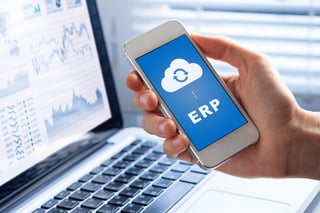As you shop for SaaS ERP solution providers, these are the non-negotiables.
 Cloud-based distribution ERP solutions have advanced at a rapid pace in a very short time. Now there’s no reason to settle for anything less than the features and functionalities your business operations need now and that can be scaled in the future.
Cloud-based distribution ERP solutions have advanced at a rapid pace in a very short time. Now there’s no reason to settle for anything less than the features and functionalities your business operations need now and that can be scaled in the future.
It MUST engage all users.
From social media to productivity, easy-to-use apps are the apps that users embrace. Your distribution ERP should have an interface that your employees can learn quickly and enjoy using. It should make the information each employee needs easy to access and act on. And it should support business operations with features like event-driven notifications.
It MUST optimize processes.
Distribution ERP operates at the intersection of suppliers, customers, and products, across thousands of transactions. Order entry, pricing, purchasing, and inventory management are all interconnected, and your distribution ERP should be helping your business derive maximum value from each.
It MUST add value to ordering.
21st century commerce has gone beyond just order-taking. Think of the online retailers that give you recommendations as you browse, decide, and check out. Why shouldn’t distribution ERP do the same with the customer data it gathers? And why shouldn’t it do more to accommodate special requests?
It MUST process complex pricing.
Discounts, quantity breaks, matrix pricing, contracts, special agreements, and other pricing complexities all come with the territory in warehouse distribution. Distribution ERP that can’t handle all the intricacies of your pricing, can’t help you deliver the level of customer value that differentiates you competitively.
It MUST assure security.
Seems obvious, but it always bears mentioning. You should have no doubts about how well a cloud-based distribution ERP solution safeguards your data. And that’s not just from cyber threats, but also from disasters and outages—because downtime means lost business (and possibly lost customers).
It MUST support purchasing efficiencies.
Wise purchasing decisions require a high level of business intelligence—not to mention ready access to information. A cloud-based distribution ERP should easily aggregate and serve up inventory data, customer history and trends, and other vital information. It should also enable purchasing exceptions (such as non-stock items) without exceptional effort on your part.
It MUST provide financial visibility.
IT decisions are business decisions, and your technology should always be proving its business value. A cloud-based distribution ERP solution should enable you to easily assess the P&L performance of your distribution operations—even across distributed locations, even across international borders.
These “musts” aren’t from the realm of fantasy—they reflect features and functionalities that are available in cloud-based distribution ERP solutions right now. To learn more about distribution ERP in the cloud, be sure to download the whitepaper, Why SaaS is Taking Over Distribution Software (and how your business can benefit).





